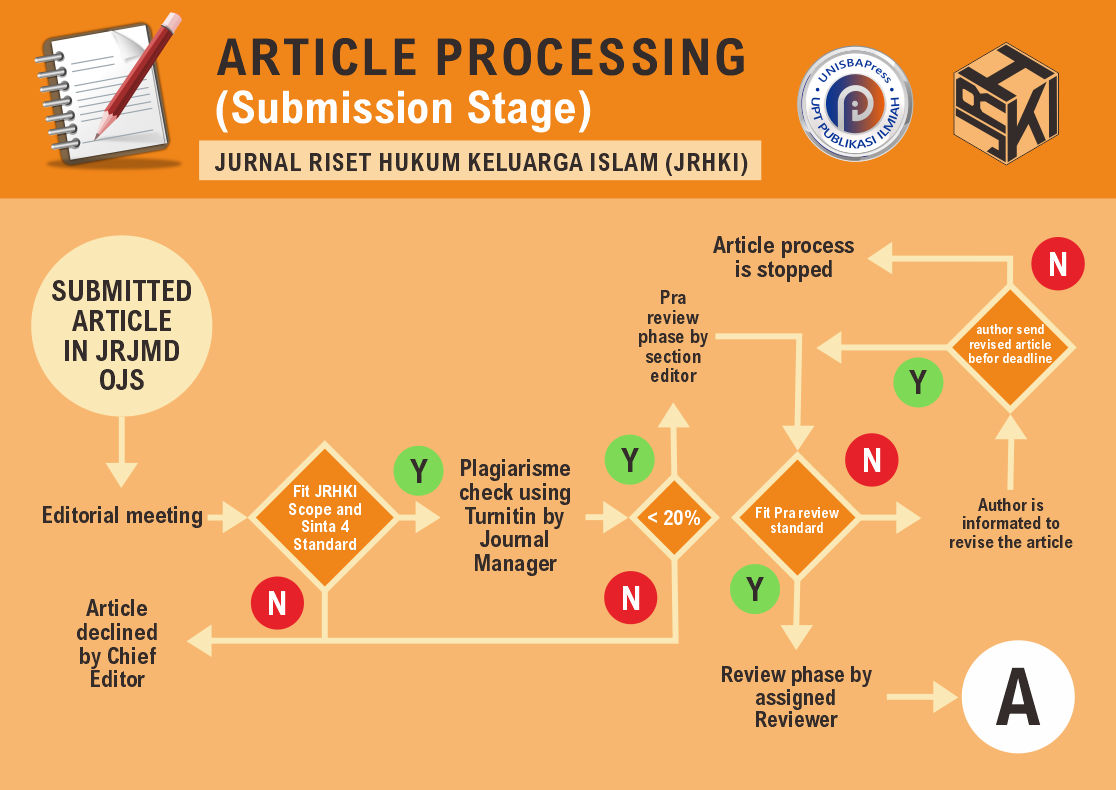Analisis Hukum Waris Islam terhadap Pasal 177 KHI dan SEMA No. 2 Tahun 1994 tentang Besar Bagian Waris Ayah
DOI:
https://doi.org/10.29313/jrhki.v1i2.431Keywords:
Tafsir Klasik, Tafsir Kontemporer, Pasal 177 KHI, SEMA No. 2 Tahun 1994, Waris AyahAbstract
Abstract. Q.S. An-Nisa: 11, 12, and 176 are the basis of inheritance law. Q.S.An-Nisa: 11 describes the inheritance of parents when the testator does not leave the child, the mother gets 1/3 part, while the rest of the father. However, KHI brings up 1/3 part for the father when the heir does not leave the child. Against this decree, SEMA was born No. 2 of 1994 as an explanation of the meaning of article 177 KHI so that the sound of article 177 changes to: "father gets 1/3 part if the heir does not leave the child but leaves the husband and mother". Part 1/3 for fathers must be examined whether it is contrary to the Qur'an or not. This research is a qualitative literature study with descriptive-analysis data processing techniques and legal comparative techniques between classical interpretation, contemporary interpretation with article 177 KHI and SEMA No. 2 of 1994. The results of this study are classical scholars and contemporary scholars agree, in a condition the heir does not leave the child, the father gets the rest. However, there are additions from classical scholars that in the condition of the heir does not leave the child but leaves the husband and mother, the father still gets leftover (ashabah), mother 1/3 of the remainder after being given the husband's share, and husband ½. Clause Article 177 KHI and SEMA No. 2 of 1994 became no longer urgent after being reviewed from the Islamic inheritance and after being calculated by gharrawain.
Abstrak. Q.S. An-Nisa: 11, 12, dan 176 adalah dasar hukum waris. Q.S.An-Nisa: 11 menjelaskan waris orangtua ketika pewaris tidak meninggalkan anak, ibu memperoleh 1/3 bagian, sedangkan ayah sisanya. Akan tetapi, KHI memunculkan bagian 1/3 untuk ayah ketika pewaris tidak meninggalkan anak. Terhadap ketetapan tersebut, lahirlah SEMA No. 2 Tahun 1994 sebagai penjelasan tentang pengertian pasal 177 KHI sehingga bunyi pasal 177 berubah menjadi: “ayah mendapat 1/3 bagian apabila pewaris tidak meninggalkan anak tetapi meninggalkan suami dan ibu”. Bagian 1/3 untuk ayah harus dikaji apakah bertentangan dengan Al-Qur’an atau tidak. Penelitian ini merupakan penelitian kualitatif yang bersifat kepustakaan dengan teknik pengolahan data deskriptif-analisis dan teknik komparasi hukum antara tafsir klasik, tafsir kontemporer dengan pasal 177 KHI dan SEMA No. 2 Tahun 1994. Hasil dari penelitian ini adalah ulama klasik dan ulama kontemporer sepakat, dalam keadaan pewaris tidak meninggalkan anak, ayah memperoleh sisa. Namun ada tambahan dari ulama klasik bahwa dalam keadaan pewaris tidak meninggalkan anak tetapi meninggalkan suami dan ibu, ayah tetap memperoleh sisa (ashabah), ibu 1/3 dari sisa setelah diberikan bagian suami, dan suami ½. Klausul Pasal 177 KHI dan SEMA No. 2 Tahun 1994 menjadi tidak urgent lagi setelah ditinjau dari waris Islam dan setelah dilakukan perhitungan dengan cara gharrawain.
References
Al-Maraghi, A. M. (1974). Tafsir Al-Maraghi Jilid 4. Mesir: Mushthafa Al-Babi Al-Halabi.
Al-Qurthubi. (2006). Tafsir Al-Qurthubi Jilid 5. Beirut: Al-Resalah.
Al-Zuhayli, W. (2009). Tafsir Al-Munir Jilid 2. Damaskus: Dar Al-Fikr.
Ath-Thabari, A. J. ( 2001). Tafsir Jami’ al-Bayan ‘An Ta’wil Ay al-Qur’an. Thob’atul Ula.
Khisni, A. (2011). Ijtihad Hakim Peradilan Agama Bidang Hukum Kewarisan dan Kontribusinya Terhadap Hukum Nasional. Jurnal Hukum No, Edisi Khusus, Vol. 18, 157.
Sa’dan, S. (2017). Ijtihad terhadap Dalil Qath’i dalam Kajian Hukum Islam. Samarah: Jurnal Hukum Keluarga dan Hukum Islam Vol. 1, No. 2, 482.
Suparman, E. (2018). Hukum Waris Indonesia Dalam Perspektif Islam, Adat dan BW, Cet. Kelima. Bandung: PT. Refika Aditama.














